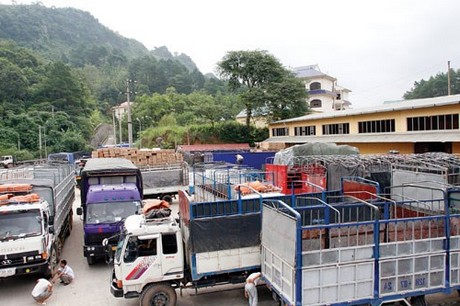 tnam's agricultural exports to China have seen a slight dip as local farmers scramble to search for new markets.
tnam's agricultural exports to China have seen a slight dip as local farmers scramble to search for new markets.Between January and July, the cassava exports to China reached around US$572.3 million, a 3.12 percent decrease year-on-year.
Around 85 percent of Vietnam's cassava and cassava-products are exported to China via the northern border, according to the Ministry of Industry and Trade. Since last year, demand for Vietnamese cassava has dropped as China’s ethanol production industry struggles.
A number of Chinese refineries have had to temporarily shut down.
Vietnamese cassava exporters have tried to bring their products to other markets such as Japan, South Korea, Russia and Taiwan, but the requirements on food hygiene and safety are prohibitively strict in those markets, the ministry noted.
In addition, Vietnamese cassava products face competition from Thailand in terms of quality and price.
Thailand is currently the world’s largest cassava exporter.
China also consumes roughly 80-90 percent of Vietnam's exports of rubber, dragon fruit and cassava powder exports.
The Ministry of Industry and Trade predicted that Vietnamese exports to China, mostly cross-border trade, will meet more difficulties in the near future as Chinese authorities tighten control over agricultural imports.
It is very likely that China will close some border gates to adjust regulations on farm produce imports, the ministry noted.
Economist Pham Chi Lan urged Vietnamese exporters to seek more markets and reduce their dependence on Chinese consumers.
Nguyen Van Ky, a spokesman for the Vietnam Fruit and Vegetables Association, said some Vietnamese fruit exporters have successfully tapped strict first-world markets.
Vietnamese dragon fruit is now sold in New Zealand; mangoes are sold to South Korea; lychee and rambutan to the United States.





